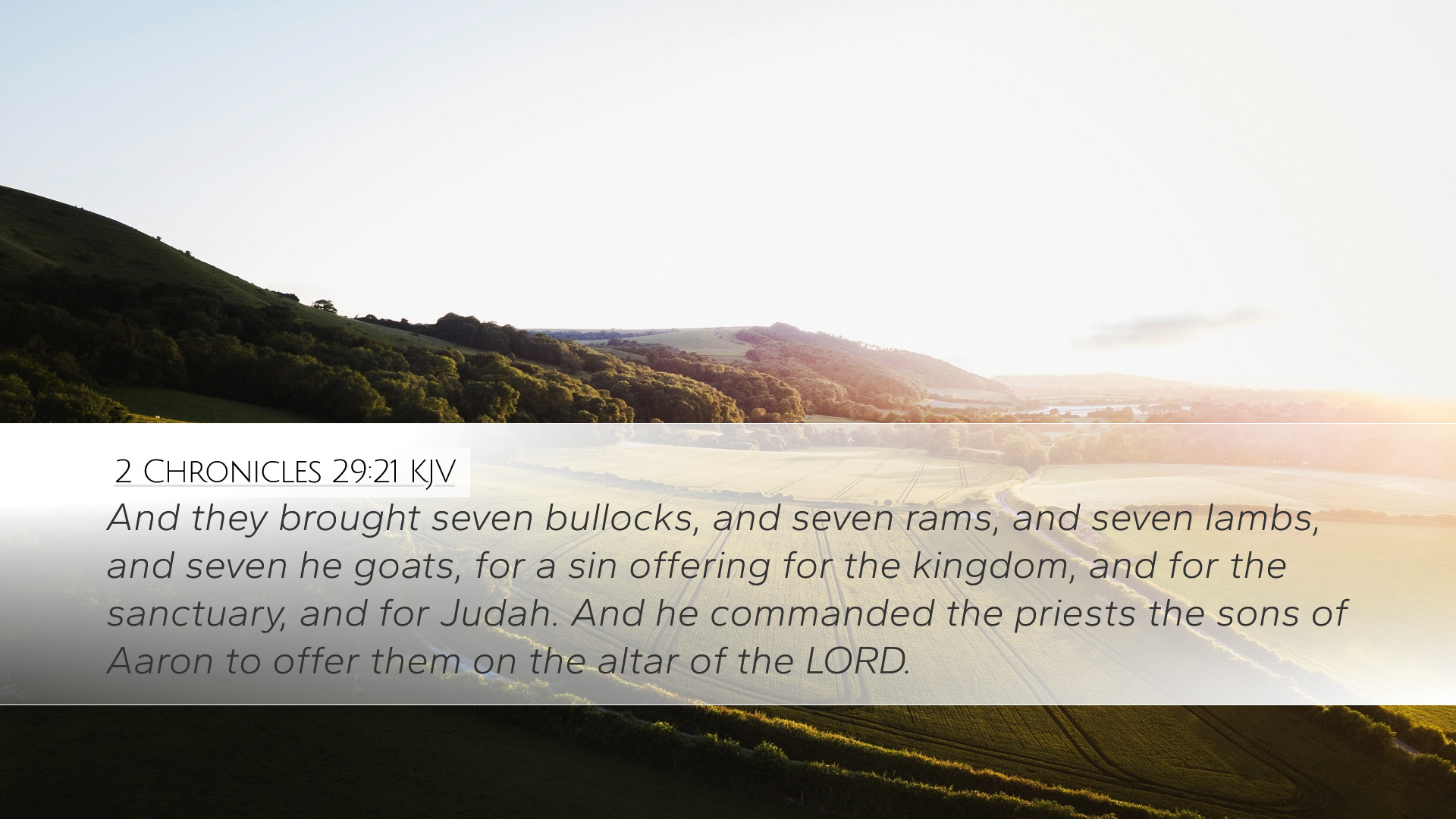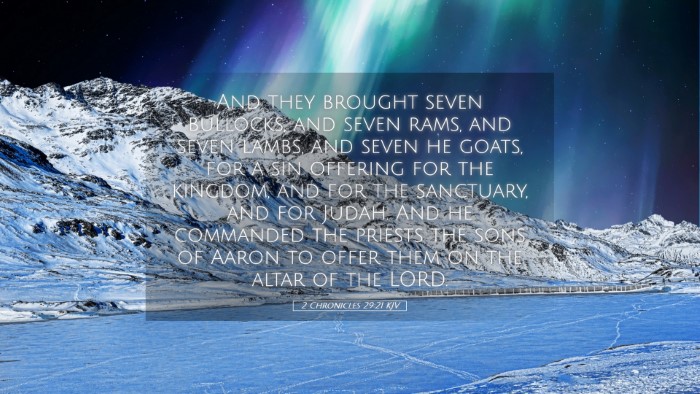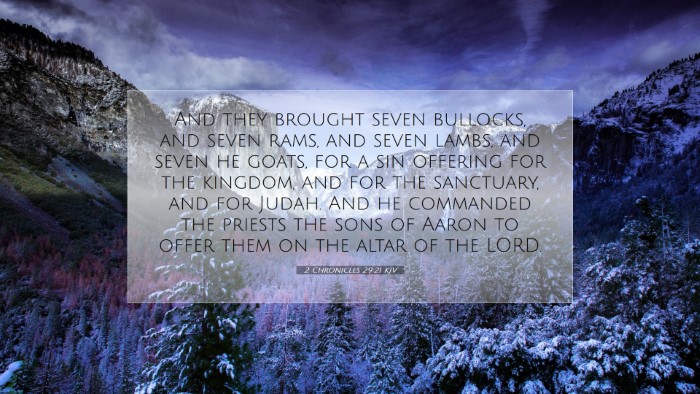Commentary on 2 Chronicles 29:21
Verse: "And they brought seven bullocks, and seven rams, and seven lambs, and seven he-goats, for a sin offering for the kingdom, and for the sanctuary, and for Judah. And he commanded the priests the sons of Aaron to offer them on the altar of the Lord."
Introduction
The verse 2 Chronicles 29:21 is set within a significant context of temple restoration and reinstitution of worship following years of neglect under the reign of Ahaz. This commentary draws from the insights of Matthew Henry, Albert Barnes, and Adam Clarke, aiming to provide a rich theological and practical exposition suitable for pastors, students, and theologians.
Contextual Background
The reign of King Hezekiah marked a pivotal moment in Judah's history. The text preceding this verse illustrates Hezekiah's resolve to cleanse and dedicate the temple of the Lord. After an extended period of idolatry, Hezekiah's actions symbolize renewal and repentance.
Hezekiah's Revival
- Restoration of Worship: Hezekiah aimed to revive true worship and obedience to Yahweh, reflecting a heart aligned with God's desires.
- Sin Offerings: The prescribed offerings indicated the seriousness of the nation's sin and the need for atonement.
- Symbol of Unity: The offerings not only covered the sins of individuals but also those of the entire nation and the temple, emphasizing unity and collective worship.
Analysis of Key Elements
The Offerings
The selection of offerings—seven bullocks, seven rams, seven lambs, and seven he-goats—holds theological and symbolic significance.
- Number Seven: In biblical symbolism, seven often represents completeness or perfection, suggesting a thorough approach to atonement.
- Bullocks and Rams: These larger animals were typically reserved for significant offerings, reflecting the gravity of the situation.
- Lambs: Innocent and without blemish, lambs symbolize purity and serve as a precursor to the ultimate sacrifice of Christ.
- He-Goats: Seen as scapegoats in some rituals, they signify the removal of sin from the community.
The Role of the Priests
Hezekiah's command to the priests underscores their sacred duties in mediating between God and the people.
- Aaronic Lineage: The priests, being descendants of Aaron, carried specific responsibilities for sacrifice and worship, highlighting the importance of ordained leadership.
- Call to Action: The command reflects a moment of renewal not only for the nation but also within the priesthood, indicating a return to faithfulness in service.
- Collective Responsibility: The priests' actions symbolize a community effort toward restoration, emphasizing that true worship involves collective participation.
Theological Implications
The act of offering sacrifices for sin serves as a significant theological motif in scripture, pointing to the need for atonement and the cost of sin.
- Atonement: This passage illustrates the principle that sin incurs a cost. In the New Testament, this principle finds fulfillment in Christ’s sacrifice, the ultimate atonement for all sin.
- Corporate Identity: The offerings relate not just to personal sin but also to the corporate identity of Judah as the people of God, illustrating the collective aspect of faith.
- God's Mercy: The provision for sin reflects God's mercy; He desires restoration rather than judgment.
Practical Application
For contemporary readers, this verse encourages reflection on the nature of worship and the importance of corporate repentance.
- Intentional Worship: Just as Hezekiah was intentional in restoring true worship, congregations today are called to examine their worship practices and ensure they align with biblical standards.
- Understanding Atonement: Believers are reminded of the seriousness of sin and the profound gift of grace found in Christ’s sacrifice.
- Leadership Responsibility: Church leaders are called to example and facilitate true worship among their congregations, following the model set forth by Hezekiah and the priests.
Conclusion
2 Chronicles 29:21 is a powerful proclamation of restoration, showing the heart of God toward His people and offering profound insights into the necessity of atonement and the role of leadership in worship. It challenges contemporary readers to embrace themes of repentance, leadership integrity, and the centrality of Christ in our understanding of sin and sacrifice.


